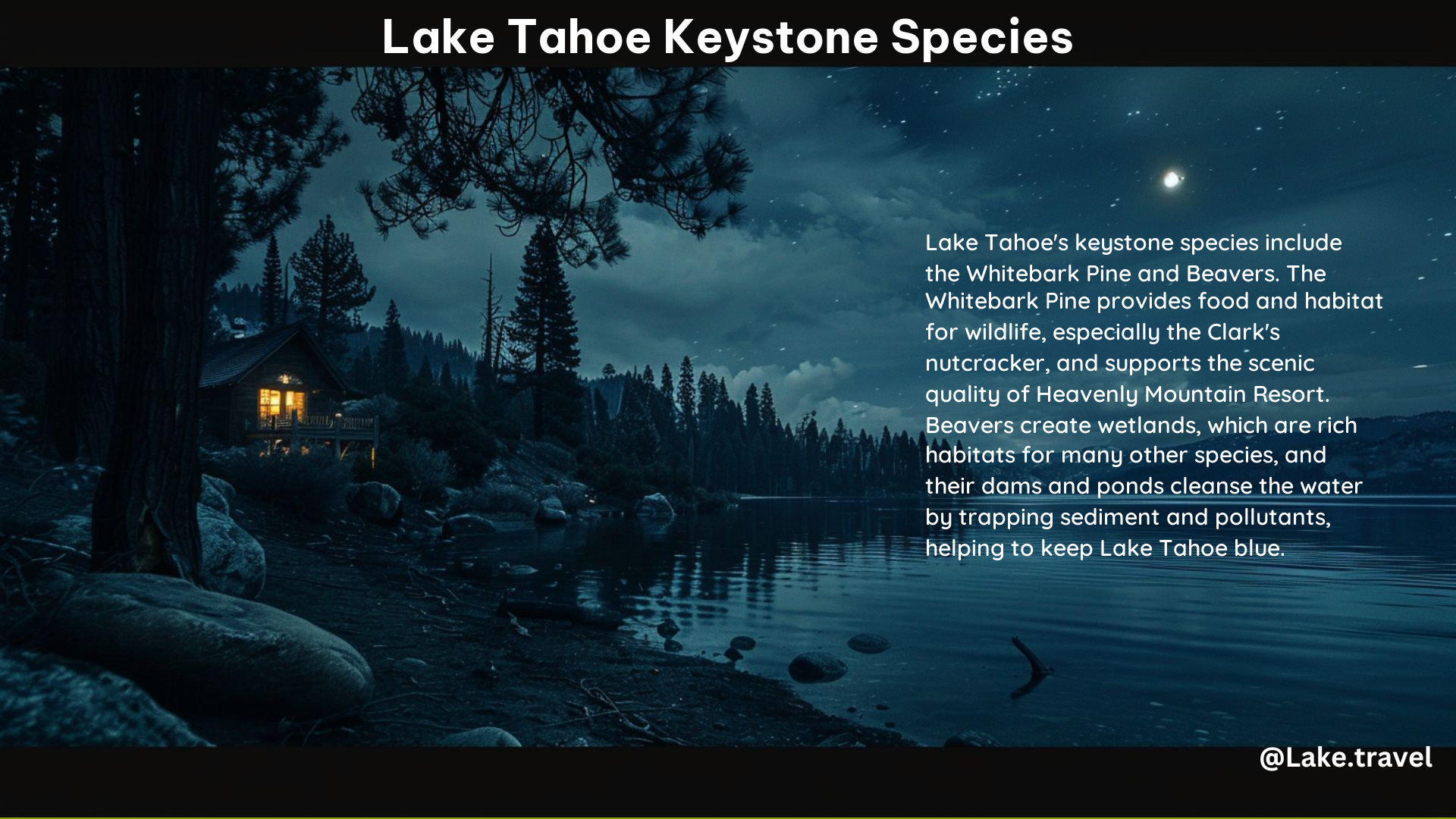Lake Tahoe is home to a diverse range of keystone species that play crucial roles in maintaining the ecosystem’s balance and biodiversity. These species are essential for the overall health and sustainability of the Lake Tahoe Basin.
American Beavers: Ecosystem Engineers
American beavers are considered a keystone species in the Lake Tahoe Basin due to their significant impact on the ecosystem. Through their dam-building activities, beavers create wetlands that support a wide range of other species, including mammals, birds, and fish. These wetlands help reduce erosion, replenish the water table, and cleanse the water by trapping sediment and pollutants.
Beaver habitats are essential for maintaining healthy ecosystems, and their activities have a significant impact on water quality and the overall biodiversity of the Lake Tahoe Basin. Conservation efforts to protect and manage beaver populations are crucial for preserving the delicate balance of the ecosystem.
Whitebark Pine: A Keystone Species for Erosion Control

Whitebark pines are another keystone species in the Lake Tahoe Basin. These trees play a vital role in preventing erosion, stabilizing snowpack, and slowing the melting of snow in the spring. Their roots capture nutrients and sediment, keeping them out of the tributaries that lead to Lake Tahoe.
Unfortunately, the decline of Whitebark pines due to invasive fungi and other factors has significant implications for the ecosystem. Conservation efforts, such as identifying and replanting fungus-resistant trees, are crucial to maintaining the health of these ecosystems.
Aspen: Protecting the Diversity of Plant and Animal Species
Aspen trees are also considered a keystone species in the Lake Tahoe Basin. These trees provide vital ecological functions, including supporting wildlife habitats and offering protection from natural disturbances. Aspen trees play a significant role in maintaining the diversity of plant and animal species in the Lake Tahoe Basin.
The Importance of Conserving Keystone Species
The keystone species found in the Lake Tahoe Basin are essential for the overall health and sustainability of the ecosystem. These species play critical roles in maintaining the delicate balance of the ecosystem, and their conservation is crucial for preserving the natural beauty and biodiversity of the region.
Efforts to protect and manage these keystone species, such as the American beaver, Whitebark pine, and aspen, are essential for ensuring the long-term viability of the Lake Tahoe Basin. By understanding the importance of these species and taking action to conserve them, we can help ensure that the Lake Tahoe ecosystem remains healthy and thriving for generations to come.
Conclusion
The Lake Tahoe Basin is home to a diverse range of keystone species that play crucial roles in maintaining the ecosystem’s balance and biodiversity. From the American beaver’s dam-building activities to the Whitebark pine’s erosion control and the aspen’s support for wildlife habitats, these species are essential for the overall health and sustainability of the region.
By understanding the importance of these keystone species and taking action to conserve them, we can help ensure that the Lake Tahoe ecosystem remains healthy and thriving for generations to come. Whether you’re a nature enthusiast, a conservation advocate, or simply someone who appreciates the natural beauty of Lake Tahoe, it’s important to recognize the vital role that these keystone species play in maintaining the delicate balance of the ecosystem.
References:
– U.S. Forest Service Pacific Southwest Region. (n.d.). Keystone of Recreation Within Species Conservation. Retrieved from https://www.fs.usda.gov/detail/r5/home/
– ResearchGate. (n.d.). Land ownership and physical features in the Lake Tahoe basin. Retrieved from https://www.researchgate.net/figure/4-Land-ownership-and-physical-features-in-the-Lake-Tahoe-basin_fig4_30068608
– Tahoe Conservancy. (n.d.). Wildlife Enhancement. Retrieved from https://tahoe.ca.gov/programs/water-quality-watersheds/wildlife-enhancement/
– Sierra Wildlife Coalition. (n.d.). CoExisting w/ Beavers. Retrieved from https://www.sierrawildlife.org/blank-3
– Tahoe Rim Trail. (n.d.). Whitebark Pine – How You Can Help Save a Keystone Species. Retrieved from https://tahoerimtrail.org/stories/whitebark-pine/
